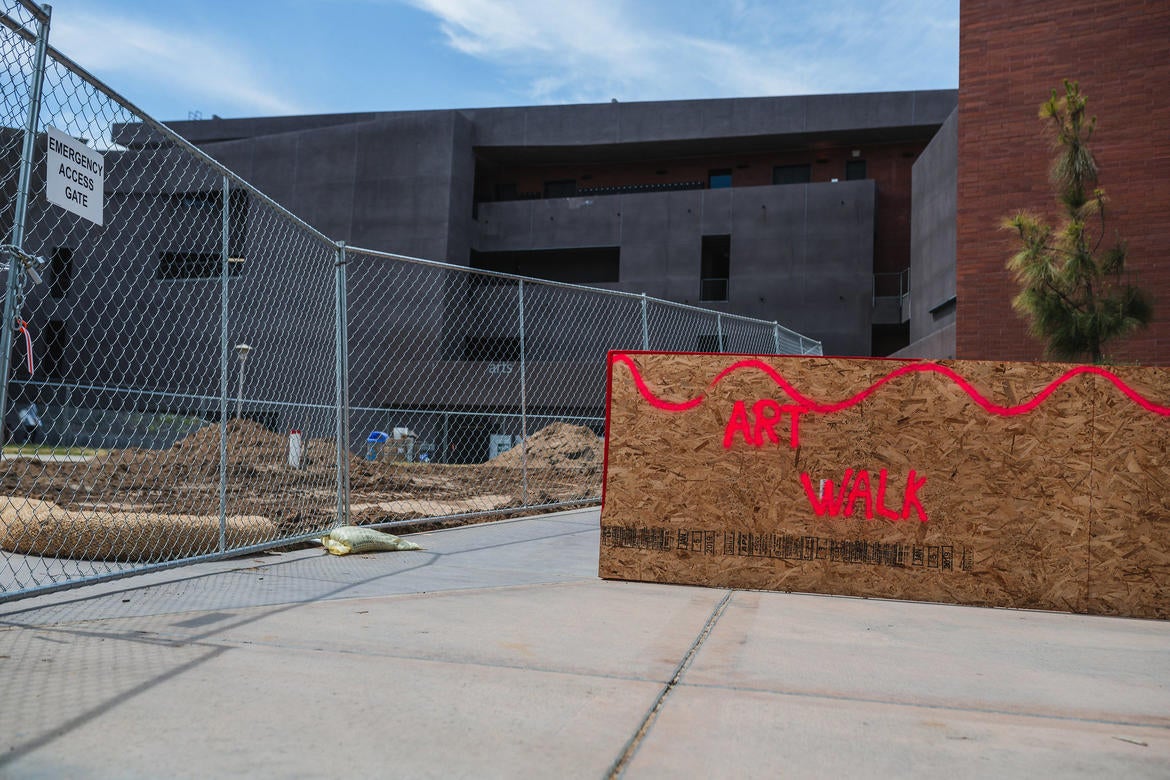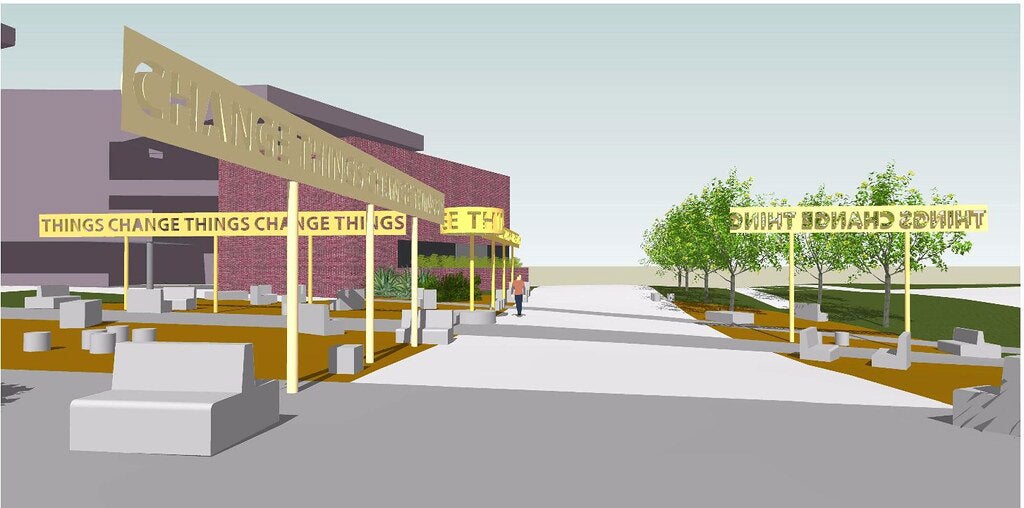College of Humanities, Arts, and Social Sciences

UCR’s College of Humanities, Arts and Social Sciences is expected to unveil its newest art addition, an interactive sculpture created by San Diego-based artist Roy McMakin. The message of “Things Change” or “Change Things” will be featured on steel signs mounted on steel poles, and will be scattered around a seating area. The project, proposed by Art Professor James Isermann with support from Chancellor Kim A. Wilcox, CHASS Dean Milagros Peña, Vice Chancellor for University Advancement Peter Hayashida, Campus Architect Jacqueline Norman, and UCR’s Advisory Committee on Campus Art (ACCA), will make the space between the INTN and Arts buildings an interactive, thoughtful space for students.
The construction of the sculpture, officially titled “Arts Mall: Roy McMakin Art Installation,” covers roughly 5,000 square feet and is to be completed later this summer. McMakin’s sculpture will form a natural communal gathering spot for students promoting thought and meditation.
“The importance of the piece is, it activates the area in a sort of thoughtful way,” Peña said. “When people who are walking through campus engage the art, they will be invited to think about what the words there mean to them, and take part in engaging the mind. Whatever might be happening in the news or in our day-to-day lives, this piece is an invitation to be part of our thought process for the day. Each day is going to engage us differently, because we experience each day differently.”
The project was initially proposed by Isermann 11 years ago, shortly after the construction of the CHASS Interdisciplinary buildings. As art world colleagues of 35 years, Isermann felt McMakin Isermann felt the artist was well equipped to tackle the project, and felt the unique architecture of the Arts building would be a perfect backdrop for the incoming piece.
“The familiarity of the forms draw you in and at the same time asks questions about how public art can become part of an everyday experience,” Isermann said. “The Arts building is unlike any other architecture on campus and now we will have an artwork that, too, makes you stop and think about why these are different, how they function and in general raises one’s awareness to the built environment. It educates the public in a very friendly way.”
The sculpture is designed to encourage students and visitors to reflect on their day and the world around them, and serves as a marker or entry point for the campus.
“It’s a sort of marker for the campus about who we are in terms of the fact that we engage the public in conversation about any number of topics,” Peña said. “Art is an inspiration and an invitation for people to be more thoughtful about how they live their lives.”
Many students are hopeful that the space will become a positive, reflective area.
“I think a main thing is college moves by so fast, and sometimes you just need to sit and reflect,” said Liliana Lopez, a third-year liberal studies and education double-major. “This art will help you reflect in on yourself and think ‘wow, look at where I started coming into this school, and look at me now.’ It will be positive no matter what, and in the end you’ll change and see yourself developing.”
“The sculpture sounds like it represents something good for the school,” said third-year sociology major Rebecca Tellez. “I think, if students read it and look at it and have a moment to think about it, it will impact their day a little better.”

